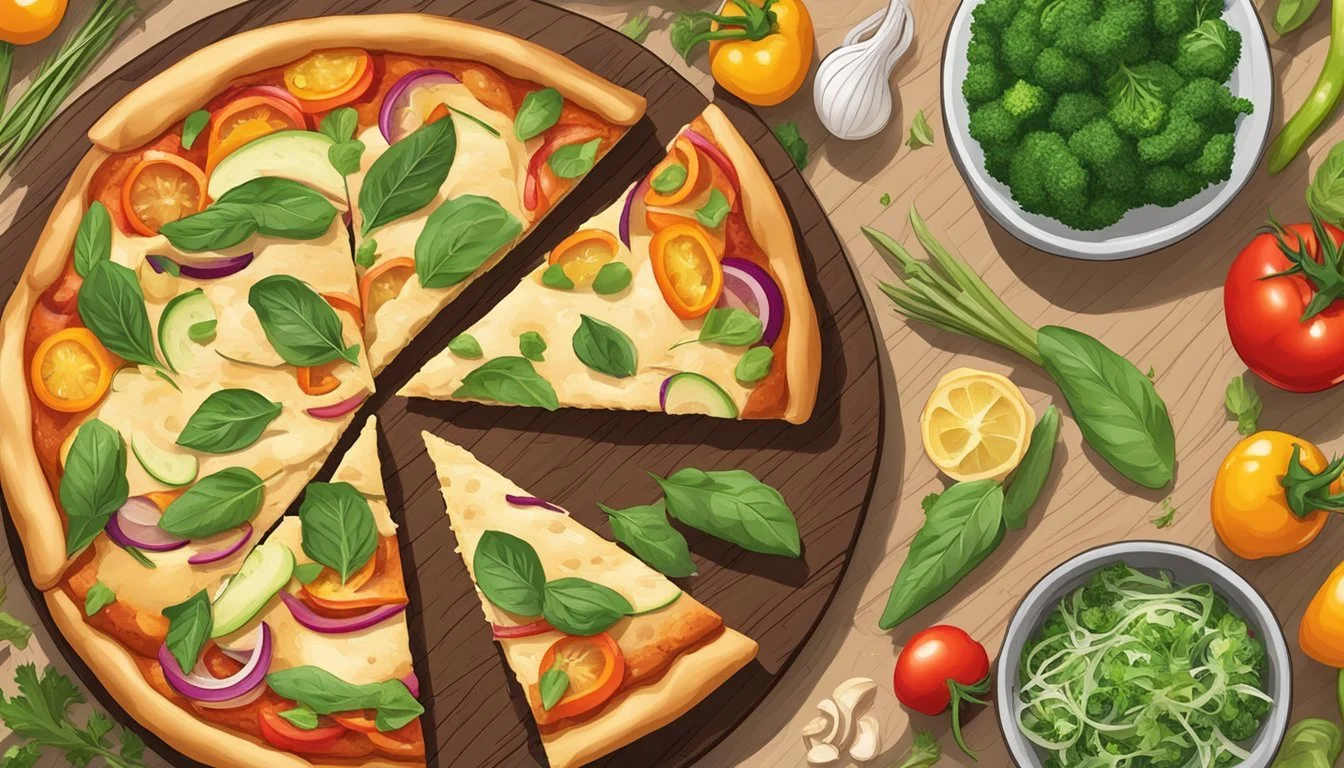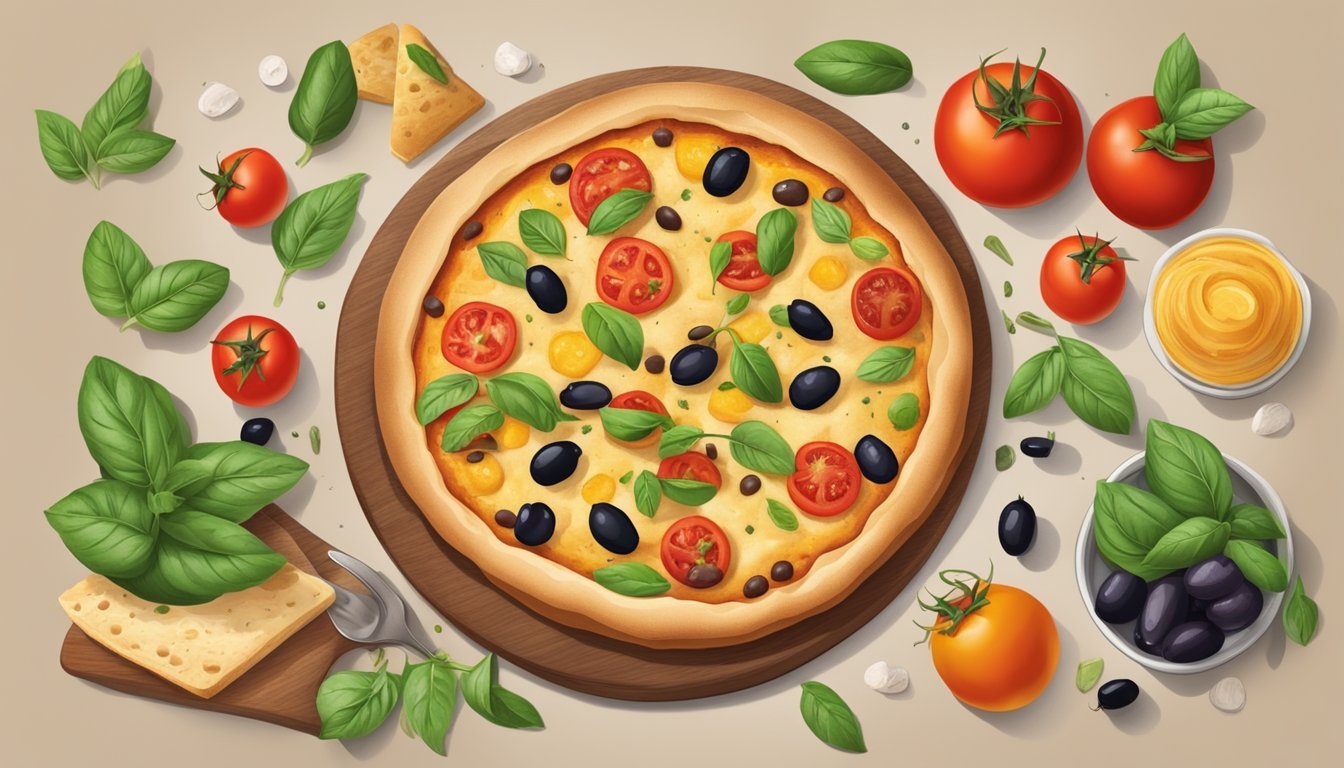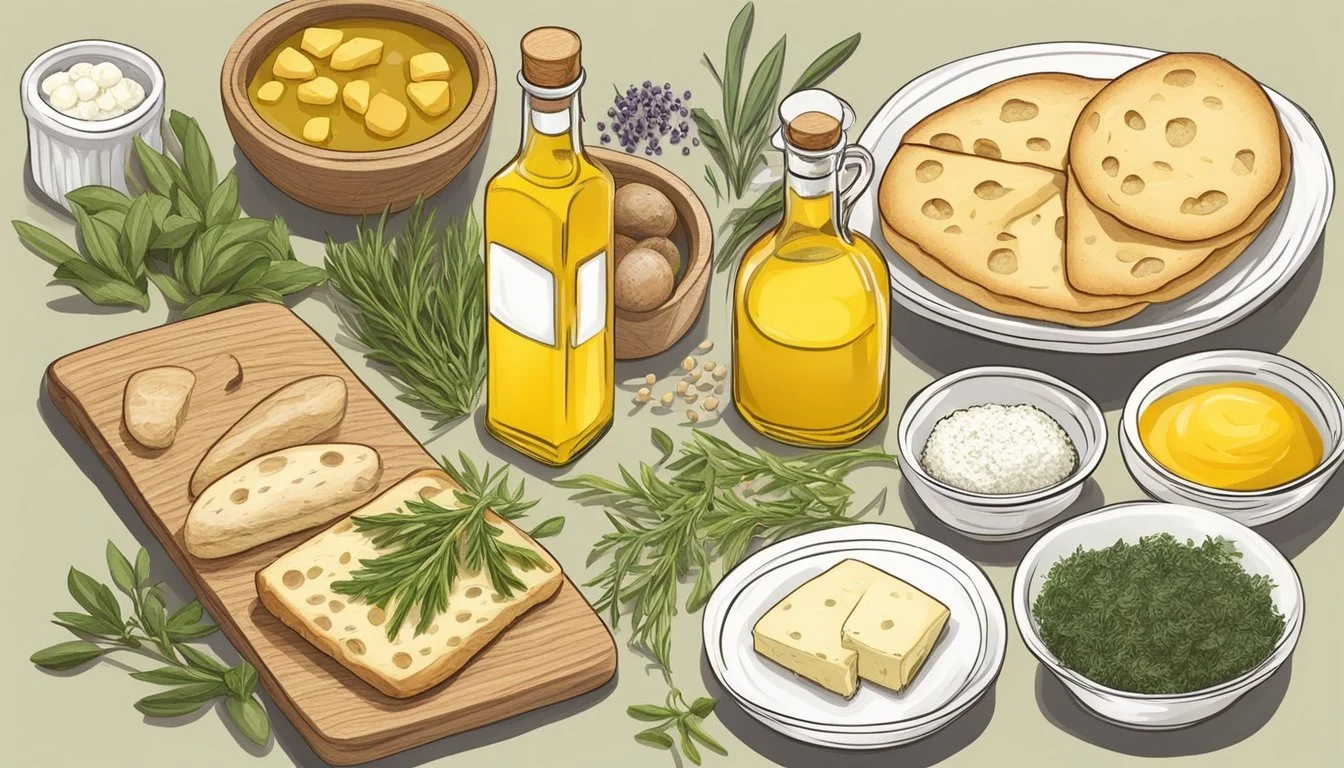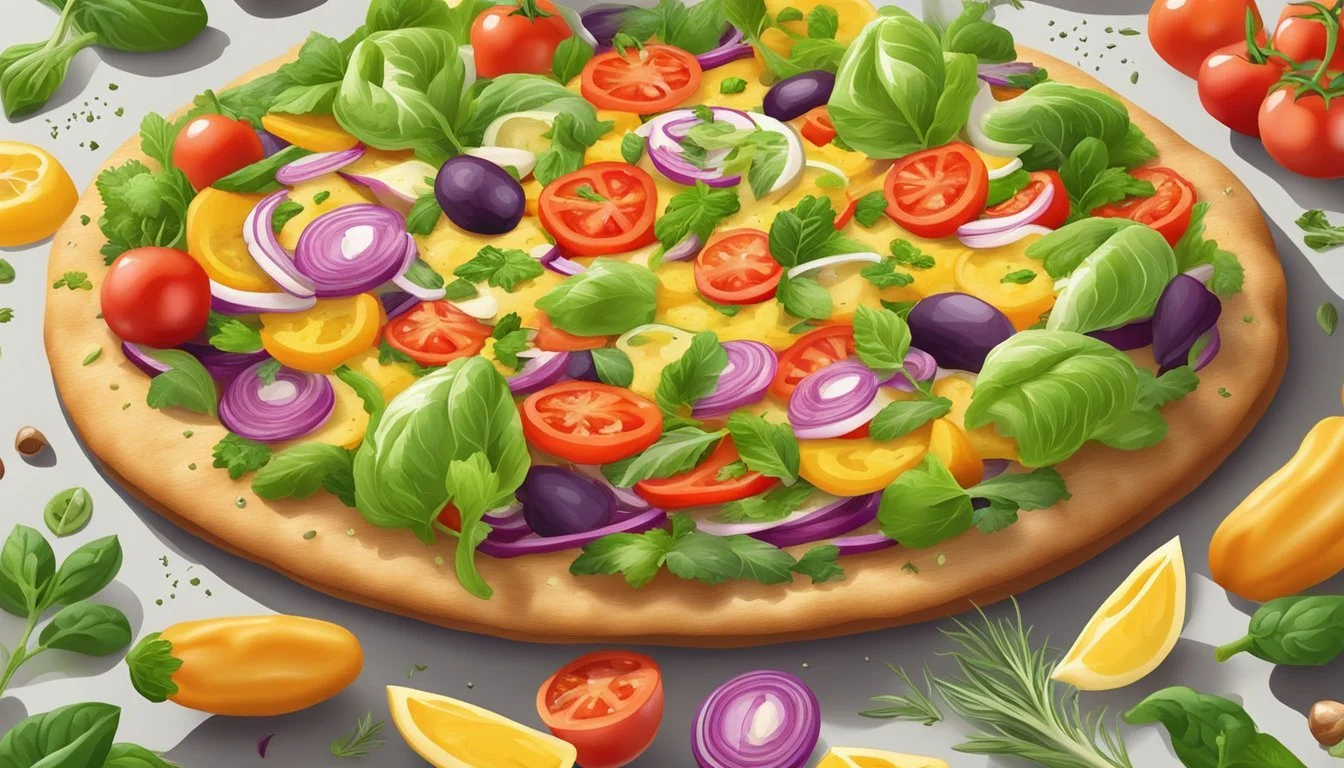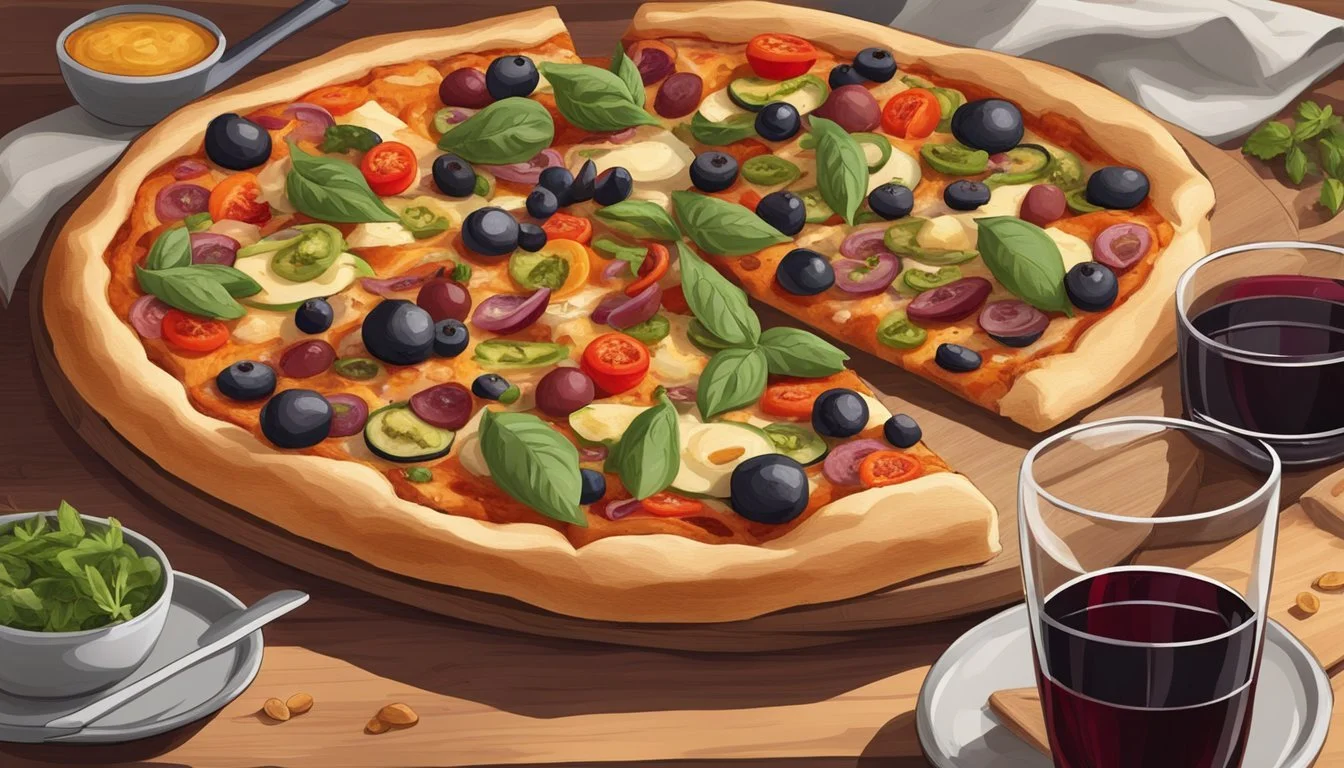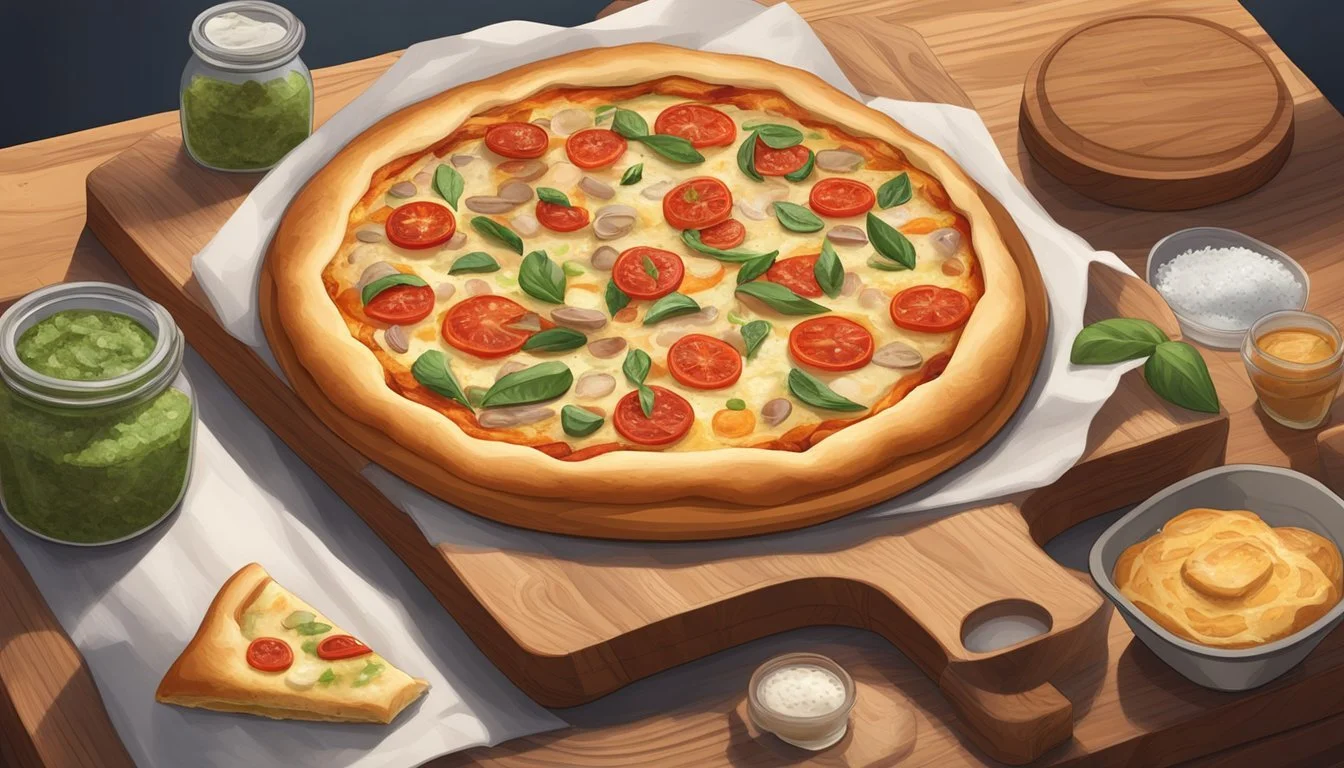Is Focaccia Pizza Vegan?
Unveiling the Truth About This Italian Delight
Focaccia, a beloved Italian bread, is characterized by its high olive oil content, plush texture, and aromatic herbs often sprinkled on top. Its simplicity and flavor make it a popular choice for many, fitting various meal types and occasions. Traditional focaccia recipes may, however, include non-vegan ingredients such as dairy-based milk and, on occasion, honey for slight sweetness or aiding in the yeast's action. Therefore, the classic version isn't always suitable for a vegan diet which avoids all animal products.
The versatility of focaccia makes it an excellent candidate for vegan adaptations. By substituting dairy milk with plant-based alternatives such as almond or soy milk and using sugar or maple syrup instead of honey, focaccia can easily comply with vegan standards. Furthermore, when focaccia serves as a base for pizza (What wine goes well with pizza?) —a dish commonly adorned with cheese—vegan cooks opt for dairy-free cheese options or nutritional yeast for that cheesy flavor.
Many recipes available now cater to the increasing demand for vegan alternatives, and vegan focaccia pizza is no exception. These recipes leverage plant-based ingredients without compromising on the delightful spongy texture and rich flavor of classic focaccia. As with any adaptation, it is all about selecting the right substitutes that retain the integrity of the original dish while making it accessible to those following a vegan lifestyle.
What Is Focaccia?
Focaccia is an Italian bread that serves as a versatile canvas for a variety of flavors and toppings. Known for its distinct olive oil presence and airy texture, it is a staple of Italian cuisine and often compared to pizza due to its shape and baking method.
History and Origin
Focaccia has deep roots in Italian history, often associated with ancient Rome where it was known as panis focacius. It was a flatbread baked on the hearth—a predecessor to modern ovens. The tradition of creating focaccia is intertwined with Italian culture and has spread throughout Italy, with each region adding its unique twist.
Focaccia vs. Pizza
While both focaccia and pizza are flatbreads, their differences are notable:
Texture: Focaccia is thicker with a more pronounced crumb and airy texture.
Olive Oil: Focaccia bread is notable for the use of olive oil, both in the dough and on top, which imbues it with a distinct flavor and moist texture.
Toppings: Focaccia often features herbs and seasonings, as opposed to the richer toppings of cheese and tomato sauce found on pizza.
Purpose: Focaccia is traditionally served as a side dish, snack, or as sandwich bread, whereas pizza is typically a main course.
Focaccia Characteristics
Dough: Focaccia's dough is similar to pizza dough but includes more olive oil, contributing to a richer flavor and softer texture.
Baking Process: It is baked at high temperatures, resulting in a crispy exterior with a soft, chewy interior.
Variations: Artisans and home cooks often experiment with toppings, incorporating everything from herbs and sea salt to more elaborate garnishes such as sun-dried tomatoes, olives, and artisan cheeses.
Understanding Veganism
Veganism is a dietary choice where individuals avoid all animal products and by-products. Its principles encompass ethical, environmental, and health concerns. Below are core aspects to consider for anyone interested in a vegan diet.
Principles of Vegan Diet
The vegan diet is grounded in the principle of abstaining from all animal-derived ingredients. It involves choices that aim to minimize animal exploitation and cruelty. Moreover, the diet is often adopted for its potential benefits to personal health and the environment. In the case of focaccia pizza, vegans would only consume versions made without any animal products, preferring plant-based alternatives such as vegan cheese over traditional cheese.
Common Non-Vegan Ingredients to Avoid
When following a vegan diet, it is crucial to be vigilant about ingredients that are commonly derived from animals. Some of these may be less obvious and can appear in foods that seem vegan at first glance. Here is a brief list of non-vegan ingredients that one should avoid:
Dairy: Milk, cheese, butter, and yogurt
Eggs: Often used in baking and in some pasta
Honey: A natural sweetener produced by bees
Gelatin: Derived from animal collagen, used in jellies and desserts
For those seeking a vegan diet, alternative products are available, such as:
Non-Vegan Ingredient Vegan Alternative Cheese Vegan cheese (made from nuts, soy, or other plant sources) Butter Plant-based butters (often made from oils like coconut or olive) Eggs Plant-based egg substitutes (like flax or chia seeds) Honey Agave syrup, maple syrup, or other plant-derived sweeteners
By being aware of these ingredients and their alternatives, individuals can maintain a vegan diet while still enjoying a variety of foods, including vegan versions of focaccia pizza.
Focaccia Ingredients and Vegan Substitutions
Traditional focaccia ingredients can be easily substituted for vegan alternatives to create a delicious vegan focaccia. The key is to know which ingredients to replace and the best options to maintain the characteristic flavor and texture of this beloved Italian bread.
Traditional Focaccia Ingredients
Flour: Typically, all-purpose flour is the base of focaccia dough.
Yeast: Active dry yeast or instant yeast is used to leaven the bread.
Water: Lukewarm water activates the yeast and hydrates the flour.
Olive Oil: A staple in focaccia, olive oil is used both in the dough and for coating.
Salt: Salt is essential for flavor and controlling yeast growth.
Sugar: Often a small amount of sugar is added to help the yeast to activate.
Vegan Ingredient Alternatives
Flour: All-purpose flour is already vegan, making it suitable for vegan focaccia recipes.
Yeast: Both active dry and instant yeast are plant-based.
Water: No substitution needed, as water is vegan.
Olive Oil: Olive oil is a plant-based fat and requires no substitution.
Salt: Salt is a mineral and naturally vegan.
Sugar: Some sugars are processed with animal bone char; it's important to use unrefined or organic sugar to ensure the focaccia remains vegan.
Making Vegan Focaccia
When crafting vegan focaccia, one embarks on a process of combining simple plant-based ingredients to create a flavorful, aromatic bread reminiscent of traditional Italian cuisine. Each step, from preparing the dough to the final bake, is designed to yield a crisp yet tender result that is both delicious and vegan-friendly.
Step-by-Step Vegan Focaccia Recipe
To begin making vegan focaccia, one combines 3 ½ cups of flour with a teaspoon of sugar, 2 ¼ teaspoons of yeast, and a dash of salt. For a dairy-free alternative, opt for dairy-free milk instead of traditional milk. One then adds warm water to the mixture, stirring until a sticky dough forms. With minimal equipment—a spatula and a large bowl—one can set the foundation for their focaccia.
Dough Preparation and Techniques
The dough should be cohesive but not overly sticky, adding more flour if necessary. Once it reaches the desired consistency, it is shaped into a ball and placed in a bowl coated with olive oil. One must allow the dough to rise until it has doubled in size, which typically takes about an hour. For those seeking convenience, some recipes offer a no-knead option, ensuring an easy-to-make approach while still producing a quality homemade pizza base. After the rise, the dough is then stretched and dimpled, a characteristic technique for focaccia that creates its iconic texture.
Baking Tips for Perfect Focaccia
Before baking, it is imperative to preheat the oven to the correct temperature—usually around 400°—to ensure even cooking. The dough is transferred onto an olive oil-coated baking sheet, evenly stretched to cover the surface, and dimpled again before entering the oven. Baking until golden brown, typically for 20-25 minutes, results in a perfectly crispy exterior and soft interior. One should monitor the focaccia during the baking process to prevent over-browning. The result is a delectable, vegan-friendly focaccia pizza that’s ready to be garnished with one's desired toppings.
Customizing Your Vegan Focaccia
Creating a vegan focaccia pizza allows for a variety of customizable toppings and flavor enhancements, making it a versatile dish suitable for any palate. With an array of plant-based toppings and a rich blend of herbs and spices, one can easily tailor their vegan focaccia to individual tastes.
Topping Options and Ideas
Vegan focaccia pizza offers a fantastic canvas for a multitude of toppings. One can opt for classic tomatoes and olives to create a Mediterranean flair, or incorporate garlic and onions for a more robust taste. For those craving a meat-like texture, vegan pepperoni or other vegan meat alternatives can be excellent additions. To personalize one's focaccia:
Sliced tomatoes or cherry tomatoes bring a sweet, juicy component.
Olives, either black or green, offer a briny, distinct flavor.
Red onion adds a sharp, colorful contrast.
Caramelized onions or roasted garlic impart sweetness and depth.
Bell peppers provide a crunchy, sweet element.
Try vegan cheeses to add creaminess without dairy.
For those who enjoy heat, red pepper flakes or thinly sliced jalapeños spice things up.
Herbs and Spices Enhancement
Herbs are the essence of flavor in vegan focaccia, taking the bread from simple to sublime. Here are specific herbs and spices that align perfectly with focaccia:
Rosemary is the traditional choice, offering a piney aroma and earthy taste.
Oregano imparts a classic Italian flavor, while basil adds a sweet, peppery essence.
Thyme complements other toppings with its subtle, dry aroma.
A sprinkle of flaky sea salt or coarse salt enhances all the other flavors.
Red pepper flakes can add a gentle heat that warms without overwhelming.
Incorporating these toppings and herbs turns vegan focaccia into not just a bread, but a flavorful, satisfying meal that caters to a variety of tastes, dietary preferences, and occasions.
Serving and Pairing
Focaccia pizza, a versatile dish, can serve as an appetizer, main course, or snack. The key to serving focaccia pizza lies in selecting the right accompaniments and understanding the nuances of various occasions.
Appropriate Accompaniments
Sauces: A drizzle of balsamic vinegar can elevate the flavors of a vegan focaccia pizza, adding a sweet and tangy profile. Other vegan-friendly sauces, such as a rich tomato or a basil pesto, are also excellent choices for adding depth to the focaccia.
Salads: A simple arugula salad with cherry tomatoes, dressed in olive oil and a splash of lemon juice, complements the pizza's hearty texture.
Wines and Beverages: Light-bodied white wines or non-alcoholic spritzers harmonize with the pizza's flavors without overpowering them.
Serving Suggestions for Various Occasions
As an Appetizer: Cut focaccia pizza into smaller bite-sized pieces to create the perfect starter for a dinner party or gathering.
Main Course: Serve larger portions accompanied by side salads or roasted vegetables to complete a balanced meal.
As a Snack: Focaccia pizza is easily enjoyed on its own or with a selection of dips such as olive tapenade or marinated artichoke hearts.
Storage and Preservation
Proper storage and preservation are key to maintaining the freshness and flavor of leftover focaccia pizza. To ensure the quality remains high, follow the guidelines for storing in the fridge and for freezing and reheating.
Storing Leftover Focaccia
Leftovers should be stored in an airtight container or wrapped tightly in plastic wrap or aluminum foil. This prevents moisture from escaping and keeps the focaccia from drying out. They can then be placed in the fridge, where they will stay fresh for up to 3 to 4 days. It is important to allow the focaccia to cool to room temperature before refrigerating to prevent condensation and sogginess.
Freezing and Reheating
For longer preservation, freezing focaccia pizza is an effective option. One should:
Wrap: Individually wrap slices or larger pieces in plastic wrap or aluminum foil.
Bag: Place the wrapped pieces into a resealable freezer bag or an airtight container.
Freeze: Label the bag or container with the date and contents, and store it in the freezer for up to 3 months.
When it is time to reheat, thaw the focaccia in the fridge overnight if possible, and then warm it in the oven at 350 degrees Fahrenheit until heated through. This will help to maintain a desirable texture and flavor.
Special Dietary Considerations
When adapting focaccia pizza to meet various dietary needs, it is important to pay attention to the ingredients that can trigger sensitivities such as gluten. Options to cater to gluten-free diets and other common food allergies are readily available.
Gluten-Free Vegan Focaccia Options
Individuals requiring a gluten-free diet must avoid traditional all-purpose and bread flours, which contain gluten. They can opt for gluten-free all-purpose or bread flour blends. While the texture may differ slightly, these flour blends are designed to mimic the properties of gluten-containing flours. Added binders such as xanthan gum or guar gum are often included in these blends to replicate the elasticity that gluten provides.
Adjusting for Food Allergies and Sensitivities
Beyond gluten, other common allergens can include nuts, soy, and certain seeds. To accommodate such sensitivities, individuals must read ingredient labels closely or prepare homemade focaccia using safe substitutes. Olive oil is a safe fat for most diets and can often be used in place of other potentially allergenic oils. Additionally, for individuals with soy allergies, it's advisable to ensure that dairy-free milk alternatives, such as almond or oat milk, do not contain any soy-derived ingredients.
Frequently Asked Questions
This section aims to address common inquiries regarding the characteristics and preparation of vegan focaccia, and whether all bread fits this category.
Is All Bread Vegan?
In general, bread can be vegan, but it isn't always. One should check the ingredients as some bread may contain milk, butter, eggs, or honey. Focaccia bread, in its traditional form, is vegan, made with simple ingredients – flour, water, yeast, and olive oil.
Can I Make Focaccia Without Yeast?
Focaccia traditionally requires yeast to create its fluffy texture. While instant yeast and active dry yeast are commonly used, creating a yeast-free version is challenging and may not yield the same results. Yeast alternatives can lead to denser bread, lacking the characteristic airy interior of classic focaccia.
How Thin Should Focaccia Be Rolled Out?
Focaccia dough should not be rolled out too thin to preserve the crispy outer crust and fluffy inside. For the ideal focaccia crust, aim for a thickness of roughly 1/2 to 3/4 inch before the final proofing. This ensures that the focaccia pizza will have enough structure to develop the airy pockets that make it distinctive.

